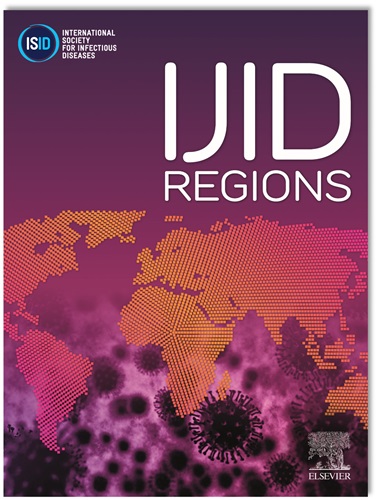Onchocerciasis status in Guinea-Bissau: An overview of trends in epidemiological and entomological indicators
IF 4.3
2区 医学
Q1 INFECTIOUS DISEASES
引用次数: 0
Abstract
Objectives
The World Health Organization recommends monitoring infection and entomological indicators to evaluate onchocerciasis elimination. We reviewed trends in Guinea-Bissau since the onset of interventions to assess current progress toward elimination.
Methods
We collated programmatic, entomological, and epidemiological data from Guinea-Bissau, including Onchocerciasis Control Programme (OCP) records, impact data, and community-directed treatment with ivermectin (CDTi) data. Trends were visualized to assess impact.
Results
Pre-control microfiladermia (mf) prevalences reached up to 70.6% along Rio Corubal and 27.4% along Rio Géba. Mf intensity ranged up to 59.9 and 6.5 mf/skin snip, respectively. Mf prevalence and intensity declined over time, despite irregular CDTi. In 2007-2008, the highest mf prevalence was 9.7% (Rio Corubal). Despite all villages being mf skin snip-negative by 2015, the detection of OV16 ELISA-positives (0.7%-14.9%) indicated ongoing transmission. Entomological surveys (2015) reported a blackfly infectivity rate of 0.06%, with infectious flies found at two of five sites (Gabú region).
Conclusions
CDTi substantially reduced mf prevalence, intensity, and vector infectivity in Guinea-Bissau, but transmission was not reduced to zero. Renewed serological and entomological assessments are needed to accurately determine elimination progress.

几内亚比绍盘尾丝虫病状况:流行病学和昆虫学指标趋势概述。
目的:世界卫生组织建议监测感染和昆虫学指标,以评估盘尾丝虫病的消除情况。我们回顾了几内亚比绍自采取干预措施以来的趋势,以评估目前在消除方面取得的进展。方法:我们整理了来自几内亚比绍的规划、昆虫学和流行病学数据,包括盘尾丝虫病控制规划(OCP)记录、影响数据和伊维菌素(CDTi)社区指导治疗数据。趋势被可视化以评估影响。结果:控制前微丝虫病在里约热内卢Corubal和里约热内卢gacimba的流行率分别为70.6%和27.4%。Mf强度分别高达59.9和6.5 Mf /皮剪。尽管CDTi不规则,但Mf患病率和强度随时间下降。2007-2008年,mf患病率最高为9.7%(2010年)。尽管到2015年所有村庄均为mf皮肤片段阴性,但OV16 elisa检测呈阳性(0.7%-14.9%)表明正在发生传播。昆虫学调查(2015年)报告称,黑蝇感染率为0.06%,在5个站点中的2个(Gabú区域)发现了传染性苍蝇。结论:CDTi显著降低了几内亚比绍的mf患病率、强度和媒介传染性,但传播并未降至零。需要重新进行血清学和昆虫学评估,以准确确定消灭进展。
本文章由计算机程序翻译,如有差异,请以英文原文为准。
求助全文
约1分钟内获得全文
求助全文
来源期刊
CiteScore
18.90
自引率
2.40%
发文量
1020
审稿时长
30 days
期刊介绍:
International Journal of Infectious Diseases (IJID)
Publisher: International Society for Infectious Diseases
Publication Frequency: Monthly
Type: Peer-reviewed, Open Access
Scope:
Publishes original clinical and laboratory-based research.
Reports clinical trials, reviews, and some case reports.
Focuses on epidemiology, clinical diagnosis, treatment, and control of infectious diseases.
Emphasizes diseases common in under-resourced countries.

 求助内容:
求助内容: 应助结果提醒方式:
应助结果提醒方式:


